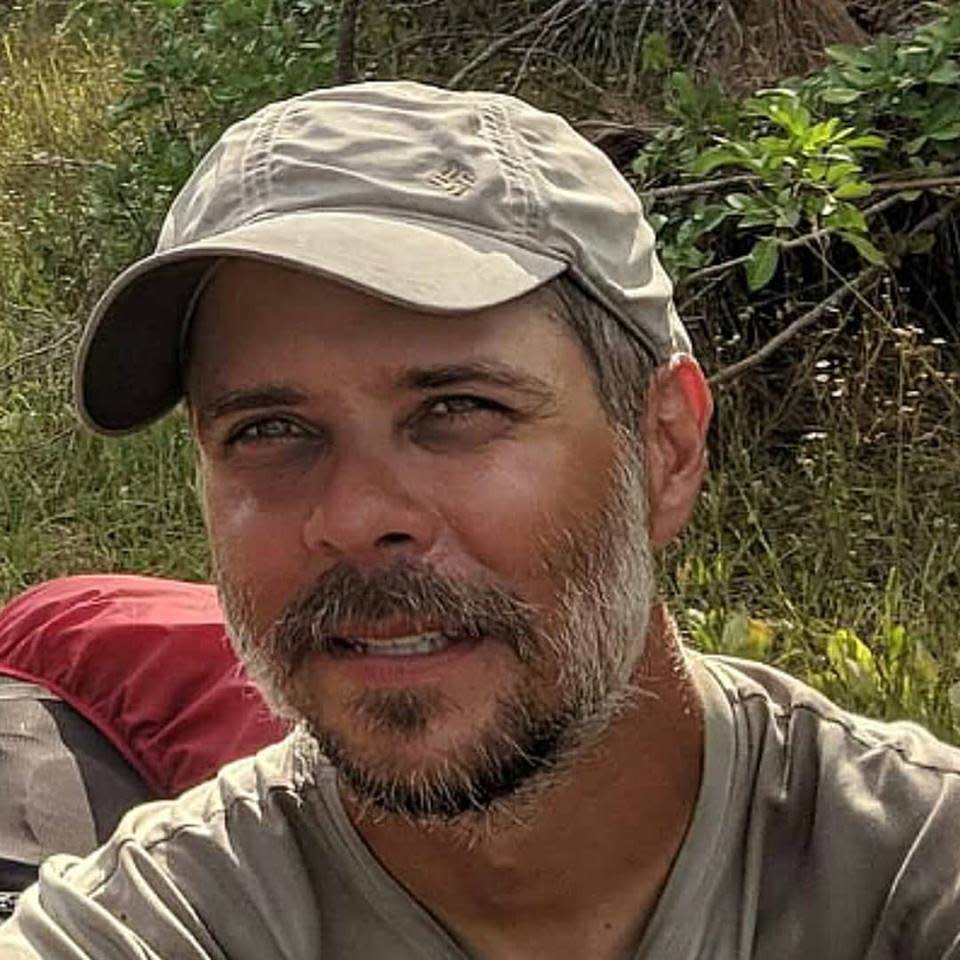How safe are you in Florida's national parks? Pretty safe, but some are more deadly than others
Some of the most breathtaking beauty, historical monuments, and exciting outdoor activities you can find in Florida are in the 11 national parks within our state ready for your enjoyment and appreciation.
Some of them, however, may be more dangerous than others. There are undeveloped landscapes, wildlife and any number of underwater hazards.
They're not all that dangerous, though, let's say that right up front. According to data released by the National Parks Service (NPS) in April, 94 people have died in one of Florida's national parks since 2007. To put that in context, over 15.5 million people visited national parks here in 2022 alone. Generally speaking, that makes going to a national park in Florida safer than crossing practically any downtown street in the state.
We're also nowhere near the most dangerous parks. Lake Mead National Recreation Area, on the border between Nevada and Arizona, leads the list by a wide margin with 287 fatalities in the last 16 years, with most of them (107) from drowning. The Grand Canyon National Park is next with 176 deaths, although the leading cause of death there is not from falling from steep canyon walls, as you might expect, but from natural deaths for medical reasons (50 cases).
Yosemite National Park actually saw more deaths from falling, 53 out of a total of 163 fatalities. The next two parks with the highest fatalities, Natchez Trace Parkway (148) and the Great Smoky Mountains National Park (126), each listed motor vehicle crashes as their leading cause of death. Altogether, there have been 3,851 fatalities in America's national parks from 2007 to 2023.
It's not a complete list. Up until 2014 the NPS' Public Risk Management System collected only information on unintentional deaths such as drownings, motor vehicle crashes, falls, etc. and didn't start tracking all deaths until after that point, so the real numbers are almost certainly higher. Also, people who have suffered injuries or drowned in a national park but were pronounced dead elsewhere may not appear on the list.
Here's how many people have died in each of Florida's national parks, in descending order.
Gulf Islands National Seashore: 36
Gulf Islands National Seashore on the Gulf of Mexico in Gulf Breeze, Florida, is known for its deep green waters, magnificent sugar white beaches, and historic Spanish structures and Civil War military posts some dating as far back as 1797. It also has the highest number of deaths per park in the state.
Since 2007, 36 people have died there. Unsurprisingly, drowning was the leading cause of death for this seaside location, accounting for fully half of all the recorded fatalities. Seven of the remaining deaths were undetermined or listed as "not reported," six were deaths from suicide, and the rest were natural deaths or the result of transportation-related crashes.
Again, though, this is an incredibly small percentage of people at the park. Gulf Islands sees more visitors by far than any other national park in Florida, clocking nearly 5.7 million people in 2022.
Biscayne National Park: 17
When people elsewhere in the world think about what a Florida vacation looks like, besides Disney World, what they're imagining looks like Biscayne National Park. Once you cross Biscayne Bay you enter a boating, snorkeling, paddling paradise. Coral reefs, a lighthouse, mangroves, stilt houses and a shipwreck await.
But all water has dangers, and drowning makes up the biggest number of the 17 deaths that have been reported in the park since 2007. Seven people have died from drowning, five from transportation-related crashes, one from "natural/environment," and four were undetermined or not reported to the parks.
Everglades National Park: 14
Everglades National Park is the largest subtropical wilderness in the United States. These 1.5 million acres of wetlands — the "River of Grass" — are what much of Florida looked like before the days of air conditioning and it's a natural habitat for thousands of wild creatures such as alligators, snakes, birds, and the Florida panther.
Transportation is the leading listed cause of death in the Everglades (6) in the last 16 years, largely because of one incident in 2018 that left four people dead after two small planes from the same South Florida flight school collided in the air and went down. The flight school shut down afterward.
Of the rest of the reported deaths, four people have drowned, one person died by suicide, and three deaths were undetermined on the NPS report.

One of the cases labeled "undetermined" was later identified as Brianne Slabaugh, 26. Her body was found in the Everglades in 2020, dead of an overdose, shortly after telling authorities that she was trained as an assassin "for a person named Dan Slater."
Her death has been included in the FBI investigation of Jupiter landscaper Daniel Slater, who authorities said had approached multiple people asking them to stalk his ex-girlfriend, Brianna Kane, and kill members of her family. One source, cooperating with the FBI, recorded Slater talking about throwing acid in Kane's face, knocking her teeth out and breaking her nose. He also told the source to spray paint "Black Lives Matter" after the murders to disguise the motive.
Days later, after the source showed Slater fake pictures of Kane's sister and brother-in-law (who posed pretending to be dead), authorities said he talked about murdering a third person. Slater was sentenced to 10 years in prison for trying to hire a hitman but the investigation into his connection with Slabaugh's death, if any, is still ongoing.
Big Cypress National Preserve: 11
Located in South Florida, about 45 miles west of Miami, Big Cypress National Preserve is 729,000 acres of freshwater swamp perfect for hiking, boating and camping in the real Sunshine State. Most recently, 20,000 acres of it were on fire, with a wildfire out of Collier County closing trails and roadways.
Eleven fatalities have been reported in the Big Cypress National Preserve since 2007. Four people died from suicide, two for medical reasons, one in a transportation accident, and four undetermined.

One person who seemed to have died from natural causes was a hiker who went by the trail names "Denim" and "Mostless Harmless," who was found at Nobles Campground in 2018 with camping gear and over $3,600 in his tent but no phone, credit cards or identification.
It took more than two years for the Collier County Sheriff’s Office to identify him as Vance Rodriquez, an IT worker from New York, after the story went national and a former coworker recognized him.
Canaveral National Seashore: 8
Drowning also has been an issue for Canaveral National Seashore, if a relatively small one. Visitors can find 24 miles of beautiful, undeveloped beaches and mangrove wetlands on this barrier island crossing the border between Volusia and Brevard counties, along with one of the nude beaches named among the best in the world.
Four people have died of drowning, one of a medical issue, and three were undetermined in the report.
Dry Tortugas National Park: 6
You have to get there by boat, ferry or seaplane. It's a remote spot of seven small islands about 70 nautical miles west of Key West. It is, in fact, one of the least-visited national parks in the country. But the Dry Tortugas National Park is spectacular, with clear blue water, coral reefs and amazing aquatic life. The park was named by Travel + Leisure as one of the "10 Places Where You Can See the Bluest Water in the U.S."
Six people have been reported dead in the Dry Tortugas since 2007, five of them from drowning and one from a medical issue.
Castillo de San Marcos National Monument: 2
Castillo de San Marcos is the oldest masonry fort on the United States mainland and the only 17th-century North American fortress still in existence, according to the National Park Service, which administers the facility as a National Monument open to tourists. In its 450+ years, it has never been conquered by an invading army. The coquina stone simply absorbed British cannon balls during an attack. The Castillo de San Marcos National Monument in downtown St. Augustine has seen only two deaths since 2007, according to the NPS report. One was a transportation crash in 2010, and in 2016 a homeless man who had been ill was found dead near the fort.
There was some temporary confusion with the discovery of his body as St. Augustine police had been looking for a missing Catholic priest, Reverend Rene Robert, but it was quickly determined to be a different person. Robert's body was later found in rural Georgia and the man responsible, Steven James Murray, pled guilty and received life in prison.
The rest of the Florida national parks: 0
As for the rest of the national parks in Florida, according to the National Parks Service there have been no deaths reported at all since 2007 at De Soto National Memorial, Fort Caroline National Memorial, Fort Matanzas National Monument or Timucuan Ecological & Historic Preserve.
C. A. Bridges is a Digital Producer for the USA TODAY Network, working with multiple newsrooms across Florida. Local journalists work hard to keep you informed about the things you care about, and you can support them by subscribing to your local news organization. Read more articles by Chris here and follow him on Twitter at @cabridges
This article originally appeared on The Daytona Beach News-Journal: By the numbers: How many people have died in Florida's national parks?

